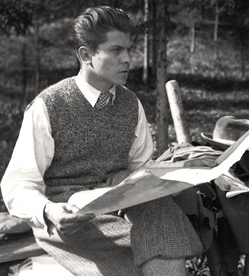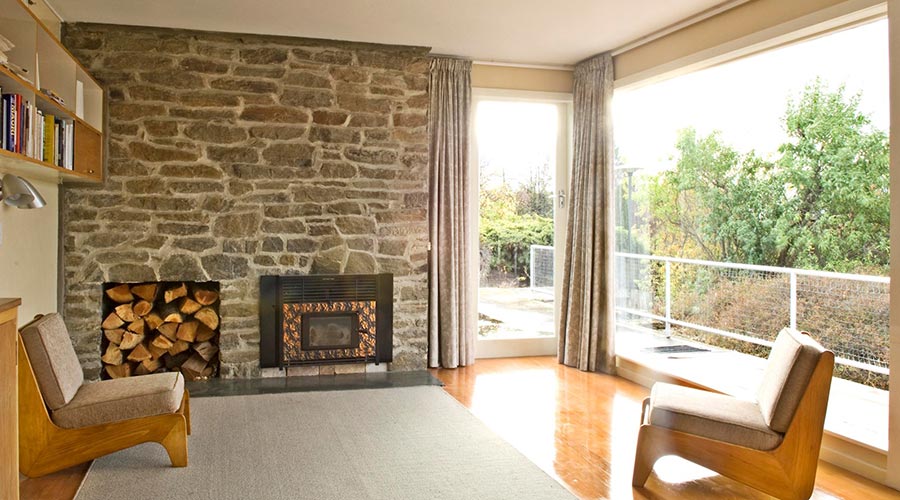Russell and Barbara commissioned ‘Henderson House’ to be built in the 1950s. Constructed using stone from its own section and the Clutha (Mata-au) River, it is one of only two houses in the South Island which were designed by the renowned Austrian architect Ernest Pilschke and his only New Zealand house built of stone.
As a result it is of considerable interest to architects through-out country and the NZ Institute of Architects has awarded Henderson House the ‘Southern Architecture Award’ in recognition of the efforts of one of New Zealand’s most acclaimed architects and the role the house plays not only in local history, but also within the arts community.
In 2012, under the guidance of a heritage architect, a major conservation project to secure the house was undertaken. This resulted in the house being re-roofed and insulated, a new kitchen and bathroom installed and the floors carpeted. The Trust acknowledges the generosity of the many supporters who contributed to the renovation project including Barbara and Virginia Henderson, the Central Lakes Trust, Otago Community Trust, Lotteries New Zealand Environment and Heritage Fund, Pub Charities, EMM Haynes Charitable Trust, Dame Gillian Whitehead and the Callis Charitable Trust.
In 2016 the existing stand alone garage/workroom was transformed into a working studio and bathroom.
In 2024, Landscape Architect Michelle Snodgrass, together with local award winning Weka Landscaping, undertook a major project to transform the grounds immediately around the house and studio to ensure the house is set in an environment appropriate to its Central Otago location.
Ernst Plischke.

Born in 1903, Ernst Plischke was an Austrian architect who had worked on both private commissions and for the New Zealand Government. He left Nazi Germany and lived in New Zealand from 1939 until 1963 when he returned to Austria. He died in 1992.
In private practice in Wellington, he designed 23 buildings in New Zealand between 1948 and 1963, including the landmark Massey House in Lambton Quay. Many of his buildings were regarded as model “models of European Modernism dropped into a faraway Pacific context”. As a result Plischke is widely recognised to be highly significant in New Zealand’s post war modernist architecture.

